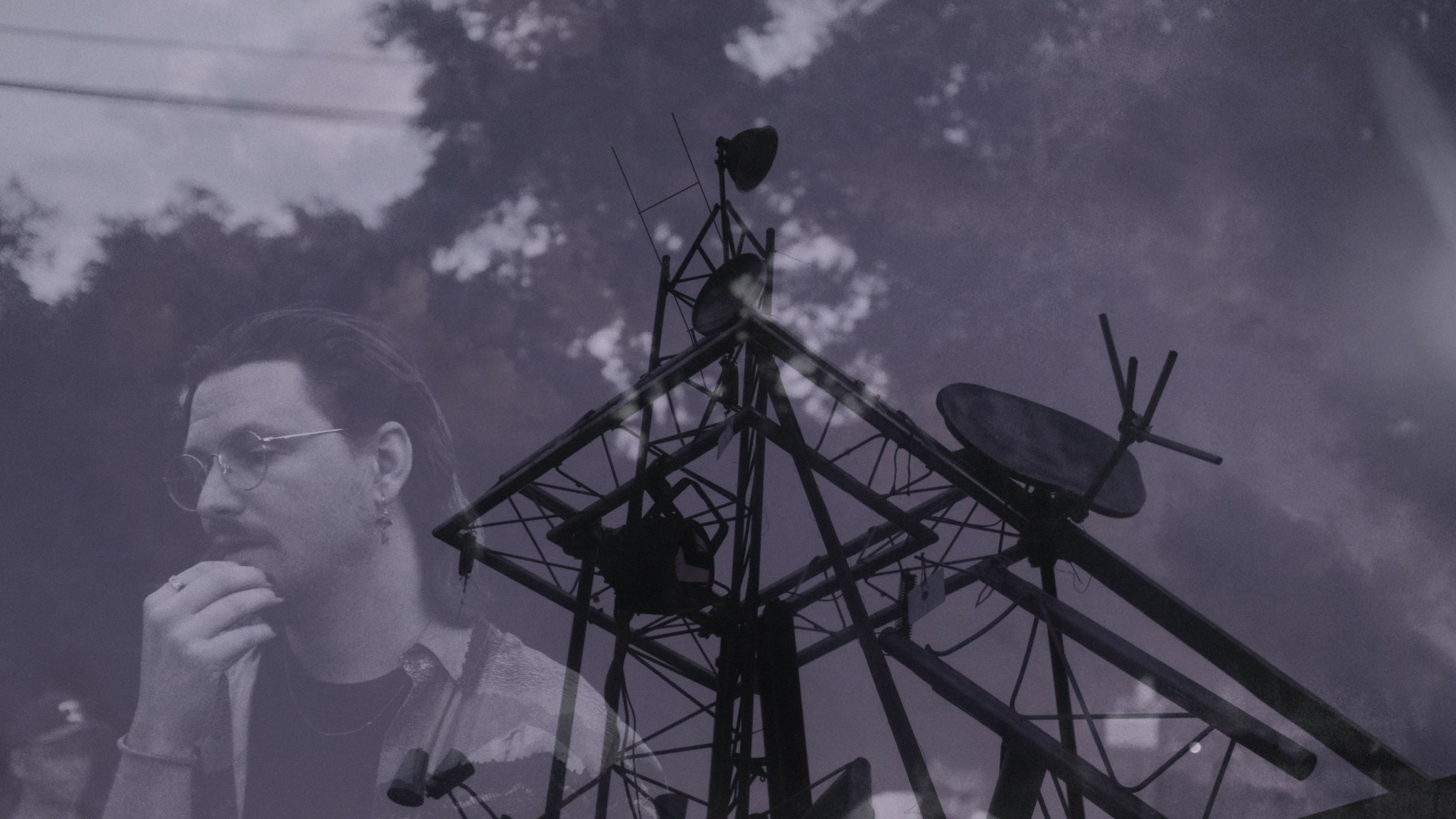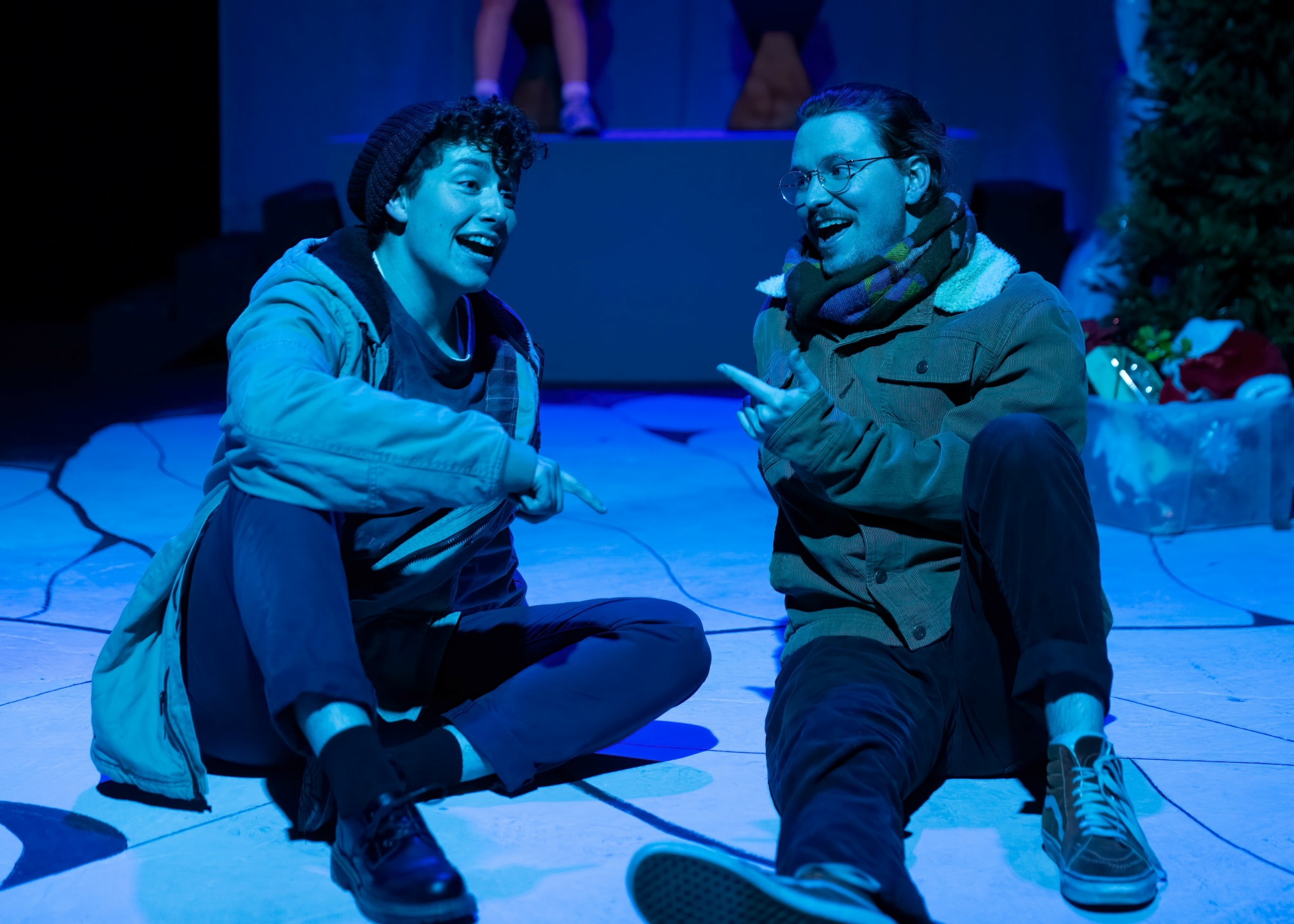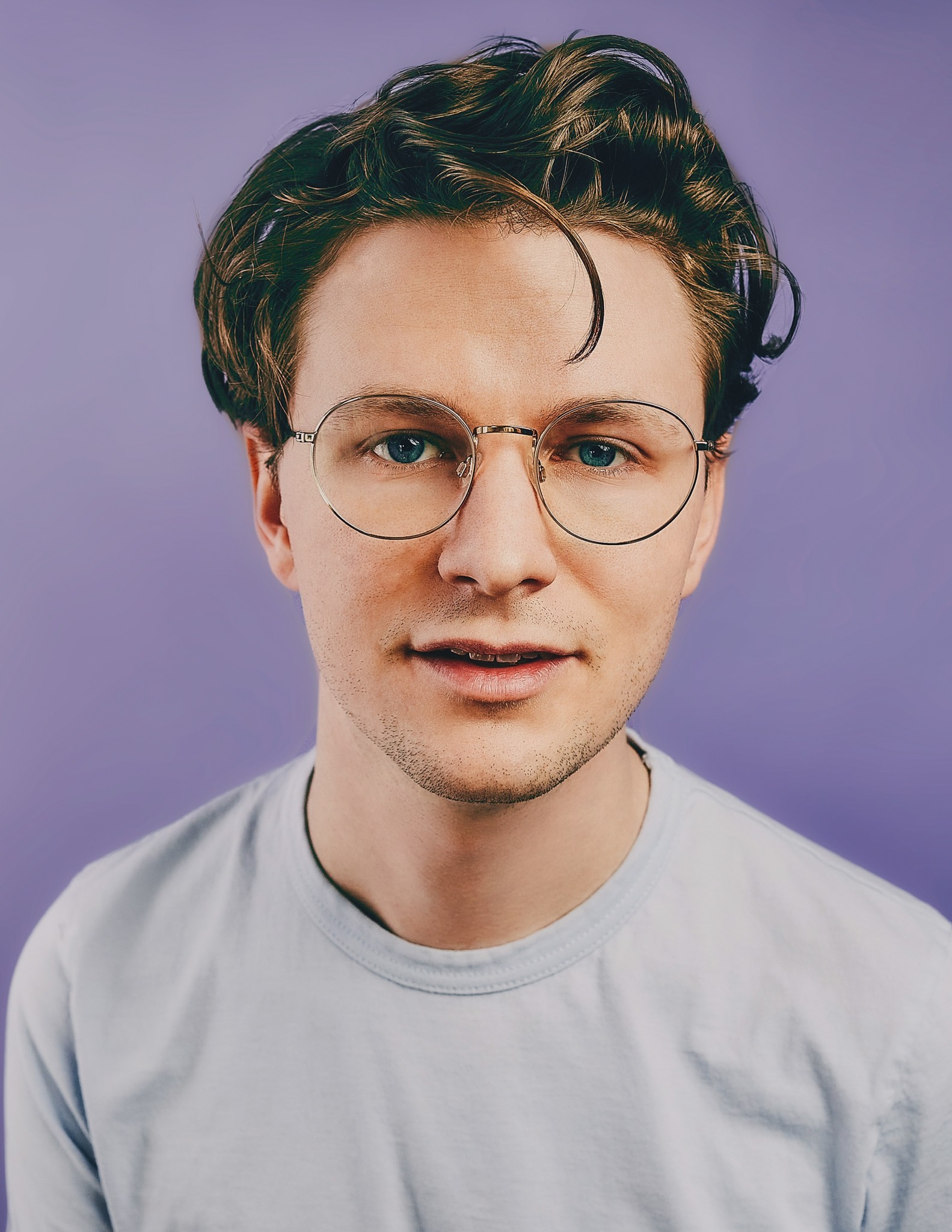Alright – so today we’ve got the honor of introducing you to Trace Turner. We think you’ll enjoy our conversation, we’ve shared it below.
Trace, thanks for taking the time to share your stories with us today What’s been the most meaningful project you’ve worked on?
One of the most meaningful projects that I’ve worked on is one that I did earlier this year. It was a brand new play from Austin-local playwright, and friend, Chris Fontanes. This was a story that seemed to fall into my life at the right time, right out of the blue sky (much like the UFO crash the play is named after).
The show is called “Aurora” and it follows a young woman with the same name on the day of her 30th birthday. We meet her out in a field in [Unspecified], Texas where she has constructed a radio tower, that seemingly only generates TS Eliot poems. We learn that Aurora has brought us out here for her swan song before the aliens, her ‘kin’ as she calls them, come to take her back to her home planet.
I am also turning 30 later this year and I felt like I had this beautiful window into the precipice that Aurora found herself standing on; longing to know ‘the answer,’ to know what she is truly meant for. The piece is very meditative filled with moments of introspection, music, and star gazing. We performed the piece in the backyard of Paper Plate Gallery in North Austin under the Texas sky during one of the best springs in recent memory.
The project was so special for me for a lot of reasons, but one of the biggest was that the process mirrored the script in so many ways. This was a project where we got to rehearse at the venue from day one — creating and discovering the play in the very spot outside where we would perform it for audiences. (We even saw a UFO on the first night!) We rehearsed out there for 6 weeks for only 9 hours per week, and with this amount of time we were able to digest and ruminate on the play and deepen our understanding for a more embodied performance. This was such an important thing for me when I was designing the the rehearsal schedule. In typical theatre contracts we have to throw the show together in 3-4 weeks rehearsing 20 hours or more each week. This kind of, in my opinion, out-dated way of theatre making often contributes to artistic burnout which I was determined not to contribute to in this day and age, post pandemic.
Finally, what made this project so special is the amount of effort and true collaboration I saw take place between the ten or so Bottle Alley artists working on Aurora. Everyone brought their artistry and passion to bringing this new play to life and it all came together beautifully this past May. The result was wonderful nights of enraptured audiences, celebration of donuts, wondering at the stars alongside the characters in this play all the while breathing the same early-summer air along with them. What’s not to love about site-specific theatre? The show was even lauded as ‘an encapsulation of what makes Austin special,’ that the experience fits so nicely into the Keep Austin Weird mindset. As a born and raised Austinite I can’t imagine higher praise.

Trace, before we move on to more of these sorts of questions, can you take some time to bring our readers up to speed on you and what you do?
I was born and raised in Austin, Texas and have really seen all the growth and change over the course of my life here. My creative life really started when I started taking photos at a young age and doing some acting here and there. My senior year of high school I started making short films and I directed my first play. That’s when directing really clicked for me. I found a sense of ease and clarity when I was directing that I hadn’t felt before, and a passion for collaborating with artists in a way that made them better at what they do. I ended up pursuing a degree in Theatre Directing at Webster University through the Peter Sargent Conservatory of Theatre Arts. There I really honed my directing craft and cut my teeth as a worker within the Regional Theatre circuit system, also known as the LoRT system.
Since graduating, I worked in several cities around the country as a director, including New York City. I began training as well as an intimacy director and have continued my education to today. I also began writing more and working with other writers, either collaboratively or in conversation with their work.
I officially moved back home to Austin in 2021 and have been getting reacquainted with the city and its artists. One reason I love working with Austin artists is the amount of original work I continue to encounter. That’s a lot of the projects I find myself working on, ‘new works.’ I love getting to work with a playwright to hone and shape their story and then working with actors and designers to then bring this work to life for the very first time. New works can definitely be more stressful at times, but the work can be so exciting and sometimes unending, in the best way possible.
I think what sets my work apart is my passion for the details and collaboration. Few things bring me as much joy as helping an artist take the next step in their work. My proudest moments have been when I can create a space for my collaborators to work in where they feel both safe enough and bold enough to really dive into the work with no hesitation and without feeling overworked or undervalued.
Is there something you think non-creatives will struggle to understand about your journey as a creative? Maybe you can provide some insight – you never know who might benefit from the enlightenment.
I think theatre-making in general is really shrouded in mystery and not many folks actually know all the work that goes into putting together a production. Furthermore, I have noticed many people have no idea what a theatre director even does. We have a good idea of a film theatre director, the person sitting in a chair behind the camera yelling action and cut and whose name appears at the beginning of the film. But theatre directing is a totally different ball game, so I thought I’d lay out some of the steps I take in my process on a theatrical contract.
– Reading the play
This is where it all begins. I receive the script from either the playwright or producer and take my first pass through. I try to do this in a single sitting so as to get a better sense of what the whole piece feels like all at once. I then will usually accept the project and begin the process in earnest.
– Read the play, again (notes & ideation stage)
I take some time away and come up with some ideas or questions I have for this piece before going back through the script again. This time through I am going much slower. I annotate the script more and take notes for my reactions or questions on specific portions of the script. This is also where the conceptual aspects of the show starts to form.
– Talking to designers/playwright, Solidifying the concept/vision
After going through the script a couple times I begin creating a design inspiration slideshow filled with images and research into the aesthetics/era of the play. I also start the hiring process for set, lighting, costume, and sound designers so they can start working on the play in their own way, unified behind the concept.
– Auditions and Casting
The next step is to put out a casting call with the producer and pick a date for auditions and/or callbacks. This process usually takes about a week of seeing actors come in, giving adjustments, and looking at scheduling conflicts for the proposed production schedule.
– Director Paperwork
After casting is done then it’s time for me to start working on my analysis and organizational paperwork. This involves dissecting the script and breaking it apart into smaller sections. This helps down the line when it comes to planning what to do with each of our rehearsal days. Depending on how much time in the rehearsal room I have I will do a certain level of pre-blocking or planning.
– Rehearsals
This is the most fun part of process for me because there is ample room for discovering new aspects of the piece as well as getting to understand the show in three dimensions. This part of the process can be heavily tailored to serve the individual needs of the show at hand. This is when we figure out the moments of the story that we are carving out in this production and solidify them with the actors blocking. A lot of big questions get asked and a lot of experimentation takes place. I could stay in rehearsal forever, I love it.
– Production Meetings
Over the course of rehearsals, the build of the show is happening at the same. We are usually meeting semi-regularly as a production staff with the director acting as the chair of those meetings. We go department by department sorting through the needs of each of the designers and their respective teams. All this is necessary so we are prepared for technical rehearsals closer to opening.
– Tech rehearsals
These rehearsals are usually a week out from the opening night of the show and it when every department comes together in the venue to put all the puzzle pieces together. I am usually alone in this opinion, but tech rehearsals are my favorite. It’s when I finally see the show, that I’ve only seen in my head, come to life before my eyes.
– Promo
Promoting the show kinda happens at various stages throughout the process. From creating the poster and ad materials before casting, to radio appearances, and social media pushes later on. The pursuit of getting to people to go and see your show can feel unending but it is such a big help to the overall success of the show.
– Opening /Closing
This is the end of the contract! A director’s job finishes on opening night when the show gets locked and the responsibility of maintaining the show gets passed over to the stage manager. At this point I get to sit back and sing the praises of the show.
As you can see there are a lot of steps and different shapes the role of a director can take. What can be disheartening is that most contracts are only able to pay you for the time you are in rehearsal and a lot of the work that I’ve detailed above goes unpaid. However, this is the work that is necessary to make a show great.

We’d love to hear a story of resilience from your journey.
Back in 2020, I had one theatre contract survive the pandemic lockdown up in Helena, Montana. I was contracted to direct The Sound of Music and we had already been in production meetings over zoom, pivoting the design and moving it outdoors in order to be more Covid compliant. However, those early Covid days were a period of constant reconfiguration, as we all remember. Halfway through my drive to Montana I got a call from the artistic director saying that we had to switch the show last minute to a different, smaller musical.
We switched to A Year with Frog & Toad and dropped from a cast of 30 to a cast of 6. I did not know this musical at all and neither did any of our team. We still were unsure if we could even produce a musical with these new Covid parameters, much less rehearse. But we pulled together and marched forward. We had daily temperature checks, fans set up in all the doorways to any room we were in, and masks had to be worn at all times even when singing and dancing.
I quickly realized that my job was less about directing and crafting this story and more about preparing these actors and staff to be able to pull off this show within these new parameters. We learned how much stamina needed to be built up for actors to be able to sing and dance in masks. We had to incorporate masks as part of the costuming as well having to devise the optimal mask structure for performers. There was a lot of trial and error that was a part of this process in addition to having to learn and create a new show.
My biggest lesson from this experience had to be that all things can be accomodated. That rigidity is the enemy of creation. And if we are bonded together behind the same goal we can all create something really great and sustainable.
Contact Info:
- Website: https://www.traceturner.com
- Instagram: @tracemturner
- Linkedin: https://www.linkedin.com/in/trace-turner-72a410166/
- Youtube: https://www.youtube.com/@TraceTurner?app=desktop
Image Credits
1st: Bronson Carr
2nd: Isaac Stafford
3rd: Steve Rogers


